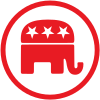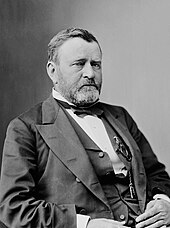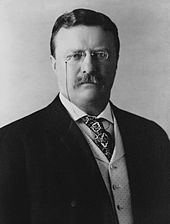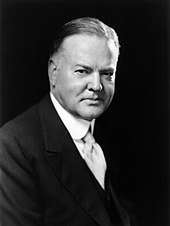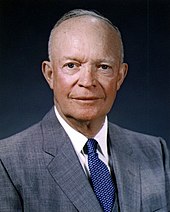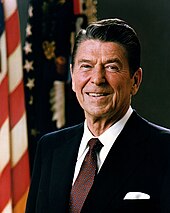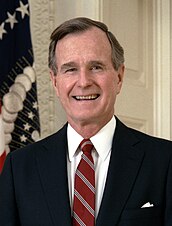Thanks most kindly for shopping with me on eBay. From an amazing Warehouse find, here are fun plastic
Celebrity identification cards/ novelty drivers licenses.
Grrrrrrrr -eetings . Here is a fun and fantastic addition to your wallet to use for Identification the next time you are asked for an i.d.
This novelty drivers license would also be wonderful for Cosplay or costume gear, or the perfect gift for any fan.
If is a Credit Card Size fun novelty rendition of an official identification card.
It is approximately in Size: 3⅛ in. x 2⅜ in. It is constructed of Thick Plastic ... Like a standard Credit Card ....
Donald Trump
Donald Trump | |
|---|---|
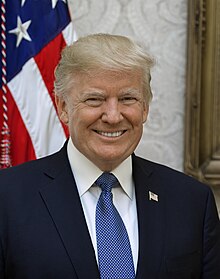 | |
| 45th President of the United States | |
| Assumed office January 20, 2017 | |
| Vice President | Mike Pence |
| Preceded by | Barack Obama |
| Personal details | |
| Born | Donald John Trump June 14, 1946 Queens, New York City |
| Political party | Republican (
|
| Other political affiliations |
|
| Spouse(s) | |
| Children | |
| Parents | |
| Relatives | Family of Donald Trump |
| Residence |
|
| Alma mater | Wharton School (BS in Econ.) |
| Awards | List of honors and awards |
| Signature |  |
| ||
|---|---|---|
|
Incumbent
|
Business and personal  |
Donald John Trump (born June 14, 1946) is the 45th and current president of the United States. Before entering politics, he was a businessman and television personality.
Born and raised in Queens, New York City, Trump attended Fordham University for two years and received a bachelor's degree in economics from the Wharton School of the University of Pennsylvania. He became president of his father Fred Trump's real estate business in 1971, renamed it The Trump Organization, and expanded its operations to building or renovating skyscrapers, hotels, casinos, and golf courses. Trump later started various side ventures, mostly by licensing his name. Trump and his businesses have been involved in more than 4,000 state and federal legal actions, including six bankruptcies. He owned the Miss Universe brand of beauty pageants from 1996 to 2015, and produced and hosted the reality television series The Apprentice from 2004 to 2015.
Republican Party (United States)
The Republican Party, also referred to as the GOP (Grand Old Party), is one of the two major contemporary political parties in the United States, along with its main, historic rival, the Democratic Party.
The GOP was founded in 1854 by opponents of the Kansas–Nebraska Act,[14] which allowed for the potential expansion of slavery into the western territories. The party supported classical liberalism, opposed the expansion of slavery, and supported economic reform.[15][16] Abraham Lincoln was the first Republican president. Under the leadership of Lincoln and a Republican Congress, slavery was banned in the United States in 1865. The Party was generally dominant during the Third Party System and the Fourth Party System. After 1912, the Party underwent a social ideological shift to the right.[17] Following the Civil Rights Act of 1964 and the Voting Rights Act of 1965, the party's core base shifted, with Southern states becoming more reliably Republican in presidential politics.[18] The party's 21st-century base of support includes people living in rural areas, men, the Silent Generation, and white evangelical Christians.[19][20][21][22]
The 21st-century Republican Party ideology is American conservatism, which incorporates both economic policies and social values. The GOP supports lower taxes, free market capitalism, restrictions on immigration, increased military spending, gun rights, restrictions on abortion, deregulation and restrictions on labor unions.[23] After the Supreme Court's 1973 decision in Roe v. Wade, the Republican Party opposed abortion in its party platform and grew its support among evangelicals.[24] The GOP was strongly committed to protectionism and tariffs at its founding but grew more supportive of free trade in the 20th century.
There have been 19 Republican presidents (including incumbent president Donald Trump, who was elected in 2016), the most from any one political party. As of 2020, the GOP controls the presidency, a majority in the U.S. Senate, a majority of state governorships, a majority (29) of state legislatures, and 21 state government trifectas (governorship and both legislative chambers). Six of the nine sitting U.S. Supreme Court justices were nominated by Republican presidents.
History
19th century
The Republican Party emerged from the great political realignment of the mid-1850s. William Gienapp argues that the great realignment of the 1850s began before the Whig party collapse, and was caused not by politicians but by voters at the local level. The central forces were ethno-cultural, involving tensions between pietistic Protestants versus liturgical Catholics, Lutherans and Episcopalians regarding Catholicism, prohibition, and nativism. Anti-slavery did play a role but it was less important at first. The Know-Nothing party embodied the social forces at work, but its weak leadership was unable to solidify its organization, and the Republicans picked it apart. Nativism was so powerful that the Republicans could not avoid it, but they did minimize it and turn voter wrath against the threat that slave owners would buy up the good farm lands wherever slavery was allowed. The realignment was a powerful because it forced voters to switch parties, as typified by the rise and fall of the Know-Nothings, the rise of the Republican Party, and the splits in the Democratic Party.[25][26]
The Republican Party was founded in the Northern states in 1854 by forces opposed to the expansion of slavery, ex-Whigs, and ex-Free Soilers. The Republican Party quickly became the principal opposition to the dominant Democratic Party and the briefly popular Know Nothing Party. The party grew out of opposition to the Kansas–Nebraska Act, which repealed the Missouri Compromise and opened Kansas Territory and Nebraska Territory to slavery and future admission as slave states.[27][28] The Republicans called for economic and social modernization. They denounced the expansion of slavery as a great evil, but did not call for ending it in the Southern states. The first public meeting of the general anti-Nebraska movement, at which the name Republican was proposed, was held on March 20, 1854 at the Little White Schoolhouse in Ripon, Wisconsin.[29] The name was partly chosen to pay homage to Thomas Jefferson's Republican Party.[30] The first official party convention was held on July 6, 1854 in Jackson, Michigan.[31]
At the 1856 Republican National Convention, the party adopted a national platform emphasizing opposition to the expansion of slavery into U.S. territories.[32] While Republican candidate John C. Frémont lost the 1856 United States presidential election to James Buchanan, he did win 11 of the 16 northern states.[33]
The Republican Party first came to power in the elections of 1860 when it won control of both houses of Congress and its candidate, former congressman Abraham Lincoln, was elected president. In the election of 1864, it united with War Democrats to nominate Lincoln on the National Union Party ticket;[33] Lincoln won re-election.[34] Under Republican congressional leadership, the Thirteenth Amendment to the United States Constitution—which banned slavery in the United States—passed the Senate in 1864 and the House in 1865; it was ratified in December 1865.[35]
The party's success created factionalism within the party in the 1870s. Those who believed that Reconstruction had been accomplished, and was continued mostly to promote the large-scale corruption tolerated by President Ulysses S. Grant, ran Horace Greeley for the presidency in 1872 on the Liberal Republican Party line. The Stalwart faction defended Grant and the spoils system, whereas the Half-Breeds pushed for reform of the civil service.[36] The Pendleton Civil Service Reform Act was passed in 1883;[37] the bill was signed into law by Republican President Chester A. Arthur.[38]
The Republican Party supported hard money (i.e. the gold standard), high tariffs to promote economic growth, high wages and high profits, generous pensions for Union veterans, and (after 1893) the annexation of Hawaii. The Republicans had strong support from pietistic Protestants, but they resisted demands for prohibition. As the Northern postwar economy boomed with heavy and light industry, railroads, mines, fast-growing cities, and prosperous agriculture, the Republicans took credit and promoted policies to sustain the fast growth.[citation needed]
The GOP was usually dominant over the Democrats during the Third Party System (1850s–1890s). However, by 1890 the Republicans had agreed to the Sherman Antitrust Act and the Interstate Commerce Commission in response to complaints from owners of small businesses and farmers. The high McKinley Tariff of 1890 hurt the party and the Democrats swept to a landslide in the off-year elections, even defeating McKinley himself. The Democrats elected Grover Cleveland in 1884 and 1892. The election of William McKinley in 1896 was marked by a resurgence of Republican dominance that lasted (except for 1912 and 1916) until 1932. McKinley promised that high tariffs would end the severe hardship caused by the Panic of 1893 and that Republicans would guarantee a sort of pluralism in which all groups would benefit.[39]
The Republican Civil War era program included free homestead farms, a federally subsidized transcontinental railroad, a national banking system, a large national debt, land grants for higher education, a new national banking system, a wartime income tax and permanent high tariffs to promote industrial growth and high wages. By the 1870s, they had adopted as well a hard money system based on the gold standard and fought off efforts to promote inflation through Free Silver.[40] They created the foundations of the modern welfare state through an extensive program of pensions for Union veterans.[41] Foreign-policy issues were rarely a matter of partisan dispute, but briefly in the 1893–1904 period the GOP supported imperialistic expansion regarding Hawaii, the Philippines and the Panama Canal.[42]
20th century
The 1896 realignment cemented the Republicans as the party of big businesses while Theodore Roosevelt added more small business support by his embrace of trust busting. He handpicked his successor William Howard Taft in 1908, but they became enemies as the party split down the middle. Taft defeated Roosevelt for the 1912 nomination and Roosevelt ran on the ticket of his new Progressive ("Bull Moose") Party. He called for social reforms, many of which were later championed by New Deal Democrats in the 1930s. He lost and when most of his supporters returned to the GOP they found they did not agree with the new conservative economic thinking, leading to an ideological shift to the right in the Republican Party.[43] The Republicans returned to the White House throughout the 1920s, running on platforms of normalcy, business-oriented efficiency and high tariffs. The national party platform avoided mention of prohibition, instead issuing a vague commitment to law and order.[44]
Warren G. Harding, Calvin Coolidge and Herbert Hoover were resoundingly elected in 1920, 1924 and 1928, respectively. The Teapot Dome scandal threatened to hurt the party, but Harding died and the opposition splintered in 1924. The pro-business policies of the decade seemed to produce an unprecedented prosperity until the Wall Street Crash of 1929 heralded the Great Depression.[45]
New Deal era
The New Deal coalition of Democrat Franklin D. Roosevelt controlled American politics for most of the next three decades, excluding the two-term presidency of Republican Dwight D. Eisenhower. After Roosevelt took office in 1933, New Deal legislation sailed through Congress and the economy moved sharply upward from its nadir in early 1933. However, long-term unemployment remained a drag until 1940. In the 1934 midterm elections, 10 Republican senators went down to defeat, leaving the GOP with only 25 senators against 71 Democrats. The House of Representatives likewise had overwhelming Democratic majorities.[46]
The Republican Party factionalized into a majority "Old Right" (based in the Midwest) and a liberal wing based in the Northeast that supported much of the New Deal. The Old Right sharply attacked the "Second New Deal" and said it represented class warfare and socialism. Roosevelt was re-elected in a landslide in 1936; however, as his second term began, the economy declined, strikes soared, and he failed to take control of the Supreme Court or to purge the Southern conservatives from the Democratic Party. Republicans made a major comeback in the 1938 elections and had new rising stars such as Robert A. Taft of Ohio on the right and Thomas E. Dewey of New York on the left.[47] Southern conservatives joined with most Republicans to form the conservative coalition, which dominated domestic issues in Congress until 1964. Both parties split on foreign policy issues, with the anti-war isolationists dominant in the Republican Party and the interventionists who wanted to stop Adolf Hitler dominant in the Democratic Party. Roosevelt won a third and fourth term in 1940 and 1944, respectively. Conservatives abolished most of the New Deal during the war, but they did not attempt to reverse Social Security or the agencies that regulated business.[48]
Historian George H. Nash argues:
Unlike the "moderate", internationalist, largely eastern bloc of Republicans who accepted (or at least acquiesced in) some of the "Roosevelt Revolution" and the essential premises of President Truman's foreign policy, the Republican Right at heart was counterrevolutionary. Anti-collectivist, anti-Communist, anti-New Deal, passionately committed to limited government, free market economics, and congressional (as opposed to executive) prerogatives, the G.O.P. conservatives were obliged from the start to wage a constant two-front war: against liberal Democrats from without and "me-too" Republicans from within.[49]
After 1945, the internationalist wing of the GOP cooperated with Harry S. Truman's Cold War foreign policy, funded the Marshall Plan and supported NATO, despite the continued isolationism of the Old Right.[50]
The second half of the 20th century saw the election or succession of Republican presidents Dwight D. Eisenhower, Richard Nixon, Gerald Ford, Ronald Reagan and George H. W. Bush. Eisenhower had defeated conservative leader Senator Robert A. Taft for the 1952 nomination, but conservatives dominated the domestic policies of the Eisenhower administration. Voters liked Eisenhower much more than they liked the GOP and he proved unable to shift the party to a more moderate position. Since 1976, liberalism has virtually faded out of the Republican Party, apart from a few Northeastern holdouts.[51]
The presidency of Reagan, lasting from 1981 to 1989, constituted what is known as the "Reagan Revolution".[52] It was seen as a fundamental shift from the stagflation of the 1970s before it, with the introduction of Reaganomics intended to cut taxes, prioritize government deregulation, and shift funding from the domestic sphere into the military to combat the Soviet Union by utilizing deterrence theory. A defining moment in Reagan's term of office was his speech in then-West Berlin where he demanded Soviet General Secretary Mikhail Gorbachev to "[t]ear down this wall", referring to the Berlin Wall constructed to separate West and East Berlin.[53][54]
Since he left office in 1989, Reagan has been an iconic conservative Republican and Republican presidential candidates frequently claim to share his views and aim to establish themselves and their policies as the more appropriate heir to his legacy.[55]
In the Republican Revolution of 1994, the party—led by House Minority Whip Newt Gingrich, who campaigned on the "Contract with America"—won majorities in both Houses of Congress. However, as House Speaker, Gingrich was unable to deliver on many of its promises, including a balanced-budget amendment and term limits for members of Congress. During the impeachment and acquittal of President Bill Clinton, Republicans suffered surprise losses in the 1998 midterm elections. Gingrich's popularity sank to 17%; he resigned the speakership and later resigned from Congress altogether.[56][57][58]
For most of the post-World War II era, Republicans had little presence at the state legislative level. This trend began to reverse in the late 1990s, with Republicans increasing their state legislative presence and taking control of state legislatures in the South. From 2004 to 2014, the Republican State Leadership Committee (RSLC) raised over $140 million targeted to state legislature races, while the Democratic Legislative Campaign Committee (DLSC) raised less than half that during that time period. Following the 2014 midterm elections, Republicans controlled 68 of 98 partisan state legislative houses (the most in the party's history) and controlled both the executive and legislative branches of government in 24 states (Democrats had control of only seven).[59]
21st century
A Republican ticket of George W. Bush and Dick Cheney won the 2000 and 2004 presidential elections.[60] With the inauguration of Bush as president, the Republican Party remained fairly cohesive for much of the 2000s as both strong economic libertarians and social conservatives opposed the Democrats, whom they saw as the party of bloated, secular, and liberal government.[61] The Bush-era rise of what were known as "pro-government conservatives"—a core part of the President's base—meant that a considerable group of the Republicans advocated for increased government spending and greater regulations covering both the economy and people's personal lives as well as for an activist, interventionist foreign policy.[citation needed] Survey groups such as the Pew Research Center found that social conservatives and free market advocates remained the other two main groups within the party's coalition of support, with all three being roughly equal in number.[62][63] However, libertarians and libertarian-leaning conservatives increasingly found fault with what they saw as Republicans' restricting of vital civil liberties while corporate welfare and the national debt hiked considerably under Bush's tenure.[64] In contrast, some social conservatives expressed dissatisfaction with the party's support for economic policies that conflicted with their moral values.[65]
Bush campaigned as a "compassionate conservative" in 2000, wanting to better appeal to immigrants and minority voters.[66] The goal was to prioritize drug rehabilitation programs and aide for prisoner reentry into society, a move intended to capitalize on President Clinton's tougher crime initiatives such as the 1994 crime bill passed under his administration. The platform failed to gain much traction among members of the party during his presidency.[67]
The Republican Party lost its Senate majority in 2001 when the Senate became split evenly; nevertheless, the Republicans maintained control of the Senate due to the tie-breaking vote of Republican Vice President Dick Cheney. Democrats gained control of the Senate on June 6, 2001, when Republican Sen. Jim Jeffords switched his party affiliation to Democrat. The Republicans regained the Senate majority in the 2002 elections. Republican majorities in the House and Senate were held until the Democrats regained control in the mid-term elections of 2006.[68][69]
In the presidential election of 2008, the John McCain-Sarah Palin ticket was defeated by Senators Barack Obama and Joe Biden.[70]
The Republicans experienced electoral success in the wave election of 2010, which coincided with the ascendancy of the Tea Party movement.[71][72][73][74] (The Tea Party movement is an American fiscally conservative political movement. Members of the movement called for lower taxes, and for a reduction of the national debt of the United States and federal budget deficit through decreased government spending.[75][76] The Tea Party movement has been described as a popular constitutional movement[77] composed of a mixture of libertarian, right-wing populist, and conservative activism.) That success began with the upset win of Scott Brown in the Massachusetts special Senate election for a seat that had been held for decades by the Democratic Kennedy brothers.[78] In the November elections, Republicans recaptured control of the House, increased their number of seats in the Senate and gained a majority of governorships.[79]
When Obama and Biden won re-election in 2012, defeating a Mitt Romney-Paul Ryan ticket,[80] the Republicans lost seven seats in the House in the November congressional elections, but still retained control of that chamber.[81] However, Republicans were not able to gain control of the Senate, continuing their minority status with a net loss of two seats.[82] In the aftermath of the loss, some prominent Republicans spoke out against their own party.[83][84][85] A post-2012 post-mortem report by the Republican Party concluded that the party needed to do more on the national level to attract votes from minorities and young voters.[86] In March 2013, National Committee Chairman Reince Priebus gave a stinging report on the party's electoral failures in 2012, calling on Republicans to reinvent themselves and officially endorse immigration reform. He said: "There's no one reason we lost. Our message was weak; our ground game was insufficient; we weren't inclusive; we were behind in both data and digital, and our primary and debate process needed improvement." He proposed 219 reforms that included a $10 million marketing campaign to reach women, minorities and gays as well as setting a shorter, more controlled primary season and creating better data collection facilities.[87]
A March 2013 poll found that a majority of Republicans and Republican-leaning independents under the age of 49 supported legal recognition of same-sex marriages. Former House Speaker Newt Gingrich remarked that the "[p]arty is going to be torn on this issue".[88][89] A Reuters/Ipsos survey from April 2015 found that 68% of Americans overall would attend the same-sex wedding of a loved one, with 56% of Republicans agreeing. Reuters journalist Jeff Mason remarked that "Republicans who stake out strong opposition to gay marriage could be on shaky political ground if their ultimate goal is to win the White House" given the divide between the social conservative stalwarts and the rest of the United States that opposes them.[90] In 2015, the Supreme Court of the United States ruled bans on same-sex marriage to be unconstitutional, thus legalizing same-sex marriage nationwide.[91] In 2016, after being elected president, Republican Donald Trump stated that he was "fine" with same-sex marriage.[92]
Following the 2014 midterm elections, the Republican Party took control of the Senate by gaining nine seats.[93] With a final total of 247 seats (57%) in the House and 54 seats in the Senate, the Republicans ultimately achieved their largest majority in the Congress since the 71st Congress in 1929.[94]
The election of Republican Donald Trump to the presidency in 2016 marked a populist shift in the Republican Party.[95] Trump's defeat of Democratic candidate Hillary Clinton was unexpected, as polls had shown Clinton leading the race.[96] Trump's victory was fueled by narrow victories in three states—Michigan, Pennsylvania, and Wisconsin—that traditionally vote for Democratic presidential candidates. According to NBC News, "Trump’s power famously came from his 'silent majority'—working-class white voters who felt mocked and ignored by an establishment loosely defined by special interests in Washington, news outlets in New York and tastemakers in Hollywood. He built trust within that base by abandoning Republican establishment orthodoxy on issues like trade and government spending in favor of a broader nationalist message".[97]
After the 2016 elections, Republicans maintained a majority in the Senate, House, state governorships and wielded newly acquired executive power with the ascenion of Trump to the presidency. The Republican Party controlled 69 of 99 state legislative chambers in 2017, the most it had held in history;[98] and at least 33 governorships, the most it had held since 1922.[99] The party had total control of government (legislative chambers and governorship) in 25 states,[100][101] the most since 1952;[102] the opposing Democratic Party had full control in only five states.[103] Following the results of the 2018 midterm elections, the Republicans lost control of the House yet maintained hold of the Senate.[104]
In the course of his term of office, Trump appointed three justices to the Supreme Court: Neil Gorsuch replacing Antonin Scalia, Brett Kavanaugh replacing Anthony Kennedy, and Amy Coney Barrett replacing Ruth Bader Ginsburg. The most appointments of any president in a single term since fellow Republican Richard Nixon, Trump's was seen as solidifying a 6–3 conservative majority.[105][106]
Trump was impeached on December 18, 2019, on charges of abuse of power and obstruction of Congress.[107][108] He was acquitted by the Senate on February 5, 2020.[109] 195 of the 197 Republicans within the House voted against the charges with none voting in favor, the two abstaining Republicans were due to external reasons unrelated to the impeachment itself.[110] 52 of the 53 Republicans within the Senate voted against the charges as well, successfully acquitting Trump as a result, with only Senator Mitt Romney of Utah dissenting and voting in favor of one of the charges (abuse of power)[111][112]
In the 2020 Elections, the Republican president Donald Trump lost the White House to Democratic challenger Joe Biden.[113] This happened despite gaining seats in the House of Representatives[114] and gaining the New Hampshire State Senate[115] and New Hampshire State House.[116] Control of the Senate currently remains unclear.[117]
From Wikipedia, the free encyclopedia
People's Choice Awards
43rd People's Choice Awards
People's Choice Awards logo.svg
Country United States
First awarded March 3, 1975
Official website peopleschoice.com
Television/radio coverage
Network CBS
The People's Choice Awards is an American awards show, recognizing the people and the work of popular culture, voted on by the general public.[1] The show has been held annually since 1975.[2][3] The People's Choice Awards is broadcast on CBS and is produced by Procter & Gamble and Mark Burnett. In Canada, it is shown on Global. On April 6, 2017, E! announced they would begin airing the show in 2018; they also announced they would begin overseeing the awards' digital, social and voting platforms.[4]
The award show's creator was Bob Stivers, who produced the first show in 1975.[5][6] The first awards recognized The Sting as Favorite Picture of 1974, Barbra Streisand as the year's Favorite Film Actress, and John Wayne as its Favorite Film Actor.[7] Ratings for the annual event peaked in 1977, when the third People's Choice Awards attracted 35.3 million viewers who witnessed Farrah Fawcett win the award for Favorite Female TV Star, Star Wars win as the Favorite Picture, and Streisand and Wayne win again in the Film Actress and Actor categories.
Ceremonies
# Date Host # Date Host # Date Host
1st March 3, 1975 Army Archerd
Richard Crenna 21st March 5, 1995 Tim Daly
Annie Potts 41st January 7, 2015 Anna Faris
Allison Janney
2nd February 19, 1976 Jack Albertson 22nd March 10, 1996 Brett Butler 42nd January 6, 2016 Jane Lynch
3rd February 10, 1977 Dick Van Dyke 23rd January 12, 1997 Don Johnson
Roma Downey 43rd January 18, 2017 Joel McHale
4th February 20, 1978 24th January 11, 1998 Reba McEntire
Ray Romano
5th March 7, 1979 Army Archerd
Dick Van Dyke 25th January 13, 1999 Ray Romano
6th January 24, 1980 Mariette Hartley
Bert Parks 26th January 9, 2000 Don Johnson
Cheech Marin
7th March 8, 1981 Army Archerd
Lee Remick 27th January 7, 2001 Kevin James
8th March 18, 1982 Army Archerd
John Forsythe 28th January 13, 2002
9th March 17, 1983 Dick Van Dyke 29th January 12, 2003 Tony Danza
10th March 15, 1984 Andy Williams 30th January 11, 2004 Charlie Sheen
Jon Cryer
11th March 12, 1985 John Forsythe 31st January 9, 2005 Jason Alexander
Malcolm Jamal Warner
12th March 13, 1986 John Denver 32nd January 10, 2006 Craig Ferguson
13th March 14, 1987 Dick Van Dyke 33rd January 9, 2007 Queen Latifah
14th March 13, 1988 Carl Reiner 34th January 8, 2008
15th August 23, 1989 Michael Landon
Michele Lee 35th January 7, 2009
16th March 11, 1990 Valerie Harper
Fred Savage
Army Archerd
Barbara Mandrell 36th January 6, 2010
17th March 11, 1991 Burt Reynolds 37th January 5, 2011
18th March 17, 1992 Kenny Rogers 38th January 11, 2012 Kaley Cuoco
19th March 17, 1993 John Ritter
Jane Seymour 39th January 9, 2013
20th March 8, 1994 Paul Reiser 40th January 8, 2014 Beth Behrs
Kat Dennings


